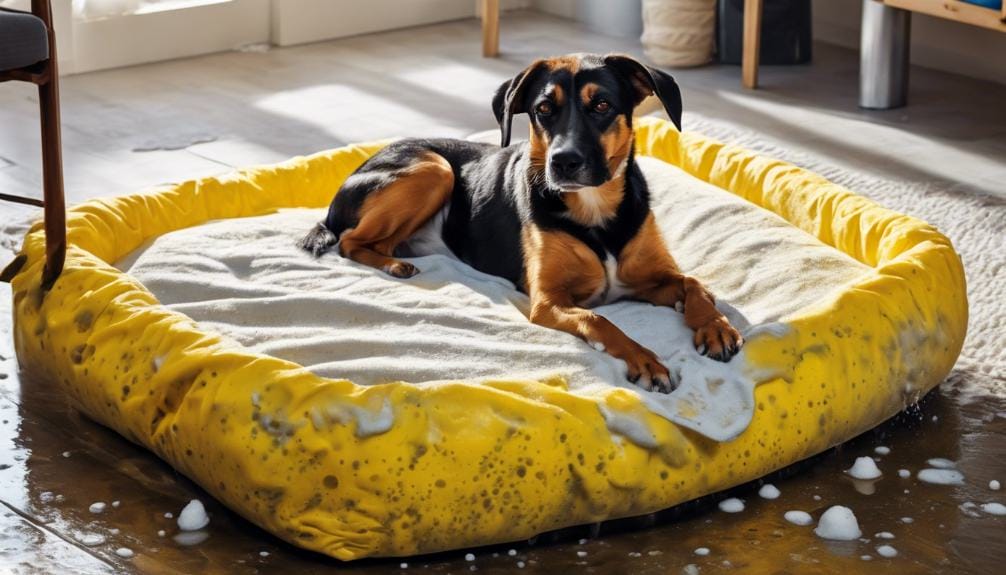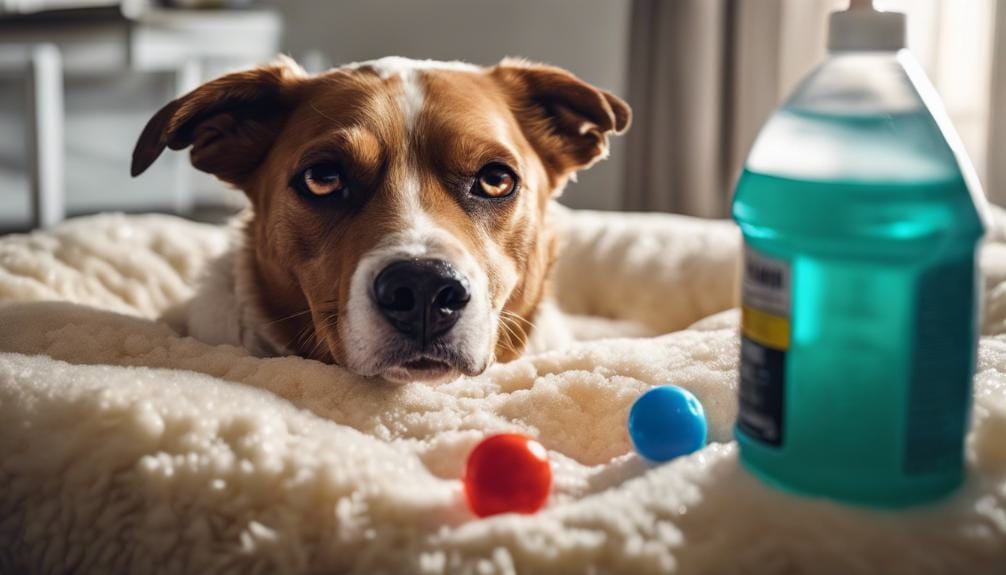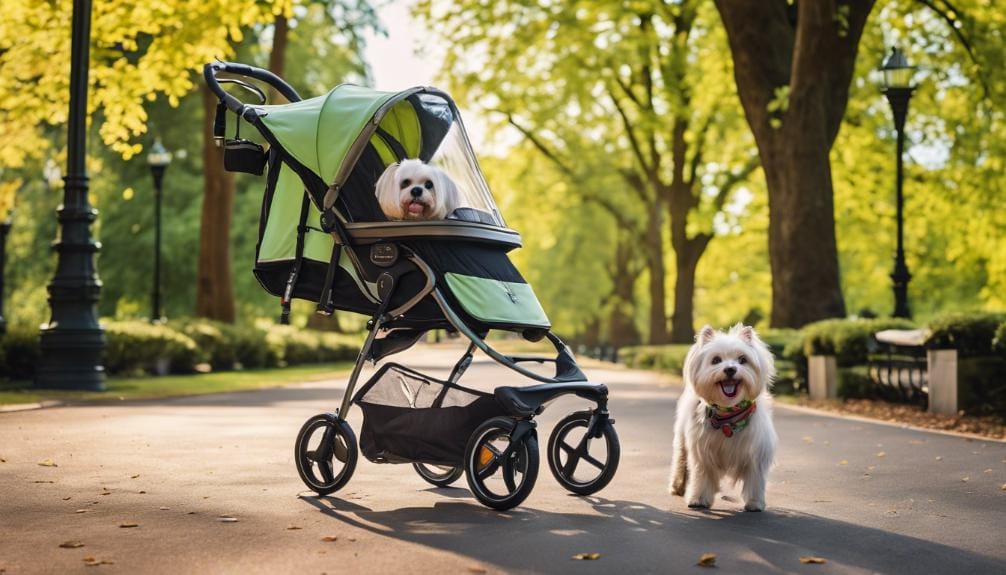Measuring the height of your beagle can tell you a lot about their health and growth. Knowing how to measure them accurately is key for making sure they stay healthy and happy. In this article, I’ll show you exactly how to measure your beagle’s height at home without any fancy tools or gadgets.
Beagles are one of the most beloved dog breeds around with their playful personalities and adorable look. But did you know that measuring their height correctly could help give you an insight into what’s going on in terms of their development? It doesn’t take much effort – just a few simple steps!
In this guide, I’m going to walk you through the exact process of accurately measuring your beagle’s height so that you have all the information necessary to ensure they stay healthy and grow properly. So let’s get started!

What To Consider Before Measuring
Measuring a beagle’s height can seem like a daunting task, but with the right considerations in mind it can actually be quite straightforward. Before launching into the process of measuring your pup, there are some key factors to consider that will set you up for success.
First, when thinking about size and measurements, take breed-specific characteristics into account. Beagles may not all look exactly alike, since they come in different sizes; however, their body type is generally consistent across litters. Knowing what your particular puppy’s parents looked like is an important factor to consider before attempting to measure its height.
Second, age-related growth spurts should also be taken into consideration when assessing size differences between puppies within one litter or amongst other dogs outside of their litter. A puppy might appear significantly bigger than another just because it is older and more developed at the time of measurement; this doesn’t necessarily mean that dog will grow to become larger than its siblings once full grown.
Finally, if you’re measuring for comparison purposes rather than tracking growth over time, make sure both dogs are standing on level ground so as to avoid discrepancies due to an uneven surface area. With these tips in hand – plus lots of patience and dedication – ensuring accurate readings shouldn’t be too difficult!
Tools And Supplies Needed
Now that you have a general idea of what to look for in size and development, it’s time to gather the necessary tools and supplies. Measuring your pup accurately requires some specific items:
- A measuring tape or soft ruler: This will be used to measure from the ground up to their withers (the highest point of their shoulder blades).
- A height chart: Having a visual reference can help immensely when trying to estimate how tall your puppy is compared to other breeds or even its littermates.
- A measuring stick or ruler: If you don’t have access to either of these items, any long straight object will do; simply mark off increments on the item with masking tape so you know exactly where each measurement begins and ends.
- Patience: Last but not least, patience! Take your time while attempting this task so as not to rush and make mistakes – accuracy is key here.
Measuring a beagle’s height isn’t always easy, but with the right preparation and care it can certainly be done correctly. Make sure all the appropriate materials are acquired beforehand, then proceed slowly and carefully throughout the process. Don’t forget to take into account breed-specific characteristics, age-related growth spurts, and level surfaces before starting your measurements–you’ll thank yourself later!
Preparing The Beagle For Measurement
Before taking any measurements, it’s important to ensure that the beagle is properly prepared. This will make the process easier and more accurate overall. Here are some tips on how to prepare your pup for measuring its height:
- Make sure they’re comfortable: First of all, take a few moments to relax your beagle before beginning the measurement process. Give them lots of love and attention so they feel secure in their environment – this makes a big difference when trying to get an accurate reading.
- Have someone help you: It can be helpful to have a second person with you during the preparation stage; one person should hold onto the pup while the other gets everything ready for the actual measuring part. That way, you won’t have to worry about accidentally scaring or startling your little buddy!
- Take off any extra clothing/accessories: If your pup has anything bulky on (like a sweater or harness), it’s best to remove these items before starting as they could potentially interfere with getting an exact measurement from ground level up to their withers.
By following these steps, you’ll be able to confidently measure your pup’s height without worrying about inaccuracies due to lack of preparation. With patience and care, you’ll soon know exactly how tall your beloved beagle truly is!
Taking Accurate Measurements
It’s time to get down to the business of taking accurate measurements! Measuring your beagle is an essential part of ensuring their overall health and wellbeing. With that in mind, let’s take a look at some techniques, tools, tips and guides for getting those all-important readings.
When it comes to measuring your pup’s height, there are several methods you can use – from using specialised measuring tools such as rulers or tape measures, to simply picking them up and comparing them against something else (like a wall). But whichever technique you choose, make sure you keep the following tips in mind:
- Ensure accuracy by starting from ground level: When using any type of tool for measurement, always start from ground level so that your results will be consistent with other people’s measurements. This could mean putting books underneath one end of the ruler if necessary.
- Make minor adjustments if needed: As long as it doesn’t affect the accuracy too much, feel free to make small alterations when measuring – like pulling fur away from the body or adjusting clothing slightly. Just remember not to move too far away from ground level while doing this.
- Take multiple readings: If possible, try to measure your pup more than once just to double check that the numbers stay consistent across different attempts. This way, you’ll have peace of mind knowing that you got an accurate reading each time!
Measuring your beagle accurately isn’t difficult; however, proper preparation and attention to detail are key factors in getting reliable results every single time. Armed with these helpful tips and tricks on how to measure your pup effectively, you’re ready for success!
Recording Your Findings
Now that you’ve got your beagle’s measurements, it’s time to record the results! Documenting your pup’s height readings is an important step in tracking their progress and ensuring their overall health. With that thought in mind, let’s take a look at some tips for recording those findings correctly.
Firstly, remember to write down all of the details when noting your pup’s height – including any minor adjustments you may have made during measurement. This way, you’ll have a comprehensive record of each reading and can easily compare them side-by-side as needed. Additionally, try to make sure that all recordings are done with consistent units of measure (for example: cm or inches). Doing this will help ensure accuracy across multiple attempts and guarantee reliable results no matter what tool you use.
Finally, don’t forget to keep track of any changes over time. By making regular notes on your pet’s growth patterns – such as marking out how much they’ve grown since last year – you’ll be able to spot potential issues early on and get ahead of any possible problems before they arise. Keeping these records up-to-date will also give both you and your vet valuable information about your fur baby’s development throughout its life.
With just a few simple steps and strategies, documenting your pup’s height readings has never been easier! So why not start recording today? It could well turn out to be one of the most beneficial things you ever do for your beloved companion!
Interpreting Your Results
Now that you’ve got your beagle’s measurements and have recorded the results, it’s time to interpret them! By taking a closer look at their height readings and making comparisons with other dogs of similar size and breed, you’ll be able to get an even better understanding of your pup’s growth patterns.
To begin, take out any charts or graphs from previous visits to compare your current findings against. This will give you a quick visual reference for determining if there has been any change in their overall stature since last measure. Additionally, try checking how these numbers line up with average heights for pups of the same age group – by doing this, you can make sure they’re growing as expected and don’t need further medical attention.
Finally, remember that interpreting your pet’s height is all about context. While comparing the figures side-by-side may provide some valuable insight into their development over time, only taking into account factors like diet and exercise regimes can really help explain why certain changes are happening (or not). What’s more, having conversations with both professionals and fellow pet owners can also provide useful perspectives on what could be behind any unexpected shifts in reading – giving you an even clearer picture of your fur baby’s progress!

Frequently Asked Questions
How Often Should I Measure My Beagle’s Height?
Measuring the height of your beagle can be a tricky task, but it’s important to monitor their growth and track changes in size. The frequency with which you measure your pup’s height depends on age; if they’re young, then once every two or three weeks is ideal for monitoring their progress. As the dog gets older, however, measuring becomes less frequent – often just checking at milestones like six months or one year is enough.
It’s key to remember that puppies grow rapidly up until around nine months old when things start to slow down. During this period, monitoring their size closely will ensure you don’t miss any major leaps or changes in development. You’ll also want to check regularly during adolescence as this is a time when diet, activity level and overall health can have an impact on how much a beagle grows.
Whatever approach you take to tracking your furry friend’s height change over time, it’s important to note that many factors influence how big (or small) a beagle ends up being – so while regular measurements are essential for keeping tabs on them, try not to worry too much about whether they’re reaching certain heights by specific ages!
Is There An Average Height For Beagles?
When it comes to knowing the average height of a beagle, there are a few things to consider. First and foremost, what is considered an “average” beagle size? Secondly, how do you measure your own beagle’s height accurately? Lastly, what range does the average height of a beagle fall within? These questions can help you determine the answers about finding out an average for this popular breed.
Let’s start with understanding what makes up the average size or height of a beagle. Generally speaking, male beagles tend to stand between thirteen and sixteen inches tall at their shoulder on all four feet. For female dogs in the same breed, they usually stand around twelve to fifteen inches tall from head-to-toe when standing firmly on all four paws. This means that if you have an adult beagle at home, its size should typically not exceed these ranges by much.
But how do we go about measuring our own pet’s specific height? Well, one way might involve having someone else hold your pup while you take measurements with either a tape measure or ruler – just make sure they stay still! Additionally, note that different types of breeds may also vary slightly in terms of their individual heights as well as overall weight too so it is important to keep this in mind when looking into averages across certain breeds such as Beagles.
In order to get an accurate readout on your dog’s exact height though, I would recommend consulting with a vet who has been trained properly and understands canine anatomy best – especially since getting incorrect readings could lead to potential health risks down the line for your pooch.
Are There Any Health Concerns That I Should Be Aware Of Before Measuring My Beagle?
Measuring the height of a beagle can be tricky, especially when considering health risks. Before taking any measurements, it is important to understand the potential concerns that could arise from such an undertaking. From safety precautions to tips for success, there are many things pet owners need to consider before measuring their pup’s size.
When thinking about health issues associated with measuring your beagle’s height, perhaps the most common concern is causing unnecessary stress and anxiety for them. Dogs often become agitated or scared in unfamiliar situations, so it’s essential to ensure they feel safe and comfortable throughout the process. Additionally, make sure you use appropriate equipment – something designed specifically for measuring dogs – as regular rulers may not provide an accurate reading.
To ensure everyone remains safe during this activity, here are four key tips:
- Familiarise yourself with what type of measurement tools are needed
- Always take measurements in calm environments where distractions are minimal
- Move slowly and speak gently while positioning your dog correctly
- Use treats or toys as rewards when finished
These simple steps will help create better outcomes and experiences when measuring a beagle’s height. Pet owners should also consider consulting professionals if they have any doubts or questions regarding their pup’s safety or wellbeing during the procedure. Taking these extra measures helps guarantee both parties remain healthy and happy during this experience!
Is There A Difference In Height Between Male And Female Beagles?
When it comes to beagles, there is often a difference in height between male and female. Male beagles tend to be larger than their female counterparts; this is due to the fact that they have higher testosterone levels which can cause them to grow taller.
It’s important to note that while male beagles may generally appear slightly taller than females, there are some exceptions to this rule. For instance, if you’re looking at two purebreds of the same breed, size could vary depending on other factors such as diet or genetics. Therefore, it’s always best to measure your pet before making any assumptions about its height.
If you want an accurate measurement of your beagle’s height, then using a tape measure is the best option. You should start by placing the measuring tape at the top of their head and stretching it all the way down their back until you reach their tail. This will give you an accurate reading of how tall your pup really is!
No matter what gender your beagle is, taking these measurements will help ensure that they stay healthy and happy for years to come!
Are There Any Age-Related Changes That I Should Consider When Measuring My Beagle’s Height?
As a beagle owner, you may wonder if there are any age-related changes to consider when measuring your beloved pup’s height. The answer is yes! Age can make a difference in the size of a beagle, and it’s important to take this into account as you measure their height.
Beagles come in various sizes, with male adults typically reaching heights between 13 and 15 inches tall while female adults range from 11 to 14 inches tall. As they grow older though, their size could change due to aging processes that affect all breeds of dogs alike. Beagle aging includes shrinking muscle mass and bone density which leads to an overall decrease in body size and height.
It’s important to note that these age-related changes don’t happen overnight; rather, they occur gradually over time so owners should pay attention to subtle differences in their pet’s weight or even posture as indicators for potential height variations. Furthermore, since different types of foods have varying nutritional values and some might impact growth more than others, owners should always ensure that their pets stay on a healthy diet plan appropriate for their breed and age group.
TIP: Take pictures of your beagle at regular intervals throughout its life span so you can visually compare how it has changed over time—this will help you keep track of any age-related changes affecting its size or height!
Conclusion
Measuring your beagle’s height is an important part of keeping track of their growth and development. It can help identify any potential health concerns at a young age, as well as give you an idea if they are developing properly for their breed. Taking the time to measure your beagle’s height regularly can provide peace of mind that your furry friend is healthy and happy.
I remember when I first got my beagle puppy, Daisy, one thing I was concerned about was her size compared to other beagles. Thankfully, after measuring her every few weeks over the course of several months, I noticed that she had grown almost 3 inches taller than the average female beagle! Seeing this progress gave me assurance that she was staying within normal parameters for her breed and age group.
Overall, understanding how to measure your beagle’s height correctly is essential in making sure they stay on track with their growth process. Measurement doesn’t have to take up much time—a few minutes once a month or two should do the trick! And don’t forget: it will also provide valuable insight into whether or not they’re growing according to typical standards for their breed and gender.





Leave a Reply
You must be logged in to post a comment.